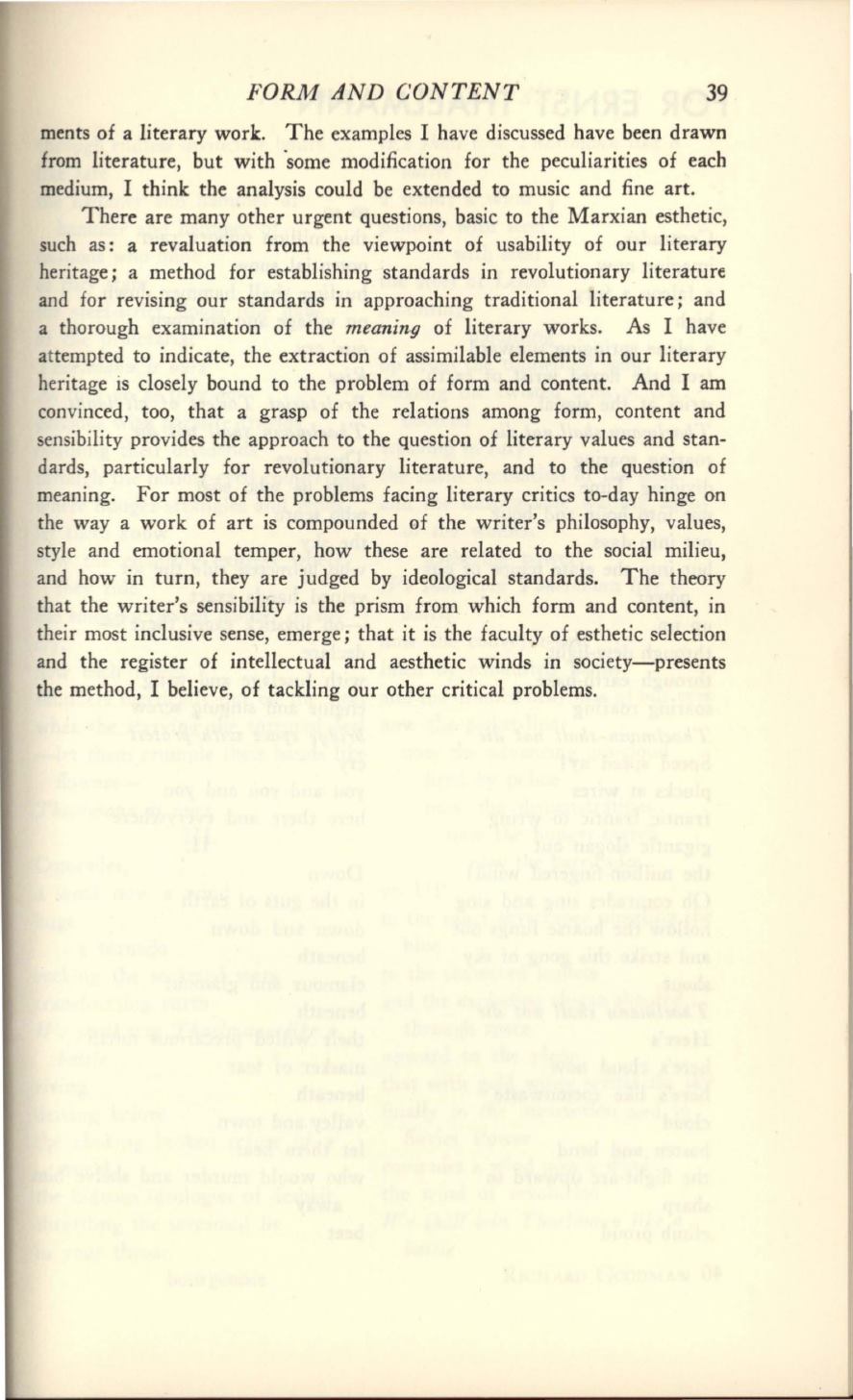
FORM AND CONTENT
39
ments of a literary work. The examples I have discussed have been drawn
from literature, but with ·some modification for the peculiarities of each
medium, I think the analysis could be extended to music and fine art.
There are many other urgent questions, basic to the Marxian esthetic,
such as: a revaluation from the viewpoint of usability of our literary
heritage; a method for establishing standards in revolutionary literature
and for revising our standards in approaching traditional literature; and
a thorough examination of the
meaning
of literary works. As I have
attempted to indicate, the extraction of assimilable elements in our literary
heritage is closely bound to the problem of form and content. And I am
convinced, too, that a grasp of the relations among form, content and
sensibility provides the approach to the question of literary values and stan–
dards, particularly for revolutionary literature, and to the question of
meaning. For most of the problems facing literary critics to-day hinge on
the way a work of art is compounded of the writer's philosophy, values,
style and emotional temper, how these are related to the social milieu,
and how in turn, they are judged by ideological standards. The theory
that the writer's sensibility is the prism from which form and content, in
their most inclusive sense, emerge; that it is the faculty of esthetic selection
and the register of intellectual and aesthetic winds in society-presents
the method, I believe, of tackling our other critical problems.


